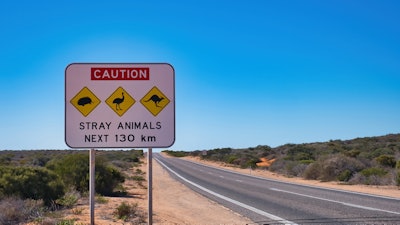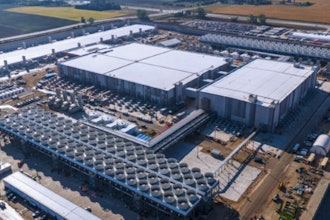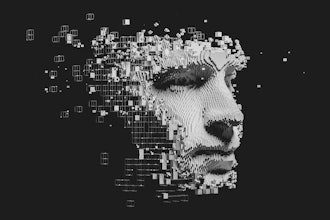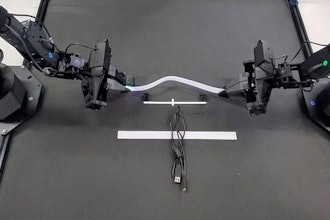
iMOVE Cooperative Research Centre (CRC)-funded researchers have developed and successfully tested world-first roadside technology designed to prevent animal–vehicle collisions in regional Australia.
The code powering the AI technology will be made available for free worldwide on GitHub. This means researchers and conservationists will have the ability to develop animal-specific models globally.
With the code now publicly available, many more endangered species could be saved - including red pandas in Nepal, giant anteaters in Brazil, pangolins in Southeast Asia, and snow leopards in Central Asia all of which face dangers when crossing roads that fragment their natural habitats.
The study was a joint effort between the University of Sydney, QUT, and the Department of Transport and Main Roads Queensland.
Researchers from the Australian Centre for Robotics (University of Sydney) and the Centre for Accident Research and Road Safety Queensland led the project. Over 12 months, they developed and tested a system called LAARMA — the Large Animal Activated Roadside Monitoring and Alert system.
LAARMA is a low-cost, AI-powered roadside unit. It uses sensors to detect animals near roads. When it spots one, it triggers nearby flashing Variable Message Signs (VMS) to warn drivers.
The field trial took place in Far North Queensland, where cassowary collisions are common. The system detected cassowaries with 97% accuracy and recorded over 287 sightings. The warning signs worked. When activated, they led to noticeable reductions in vehicle speed, lowering the risk of crashes.
‘The technology doesn’t just function — it evolves’
The LAARMA system includes a mix of pole-mounted sensors — RGB cameras, thermal imaging, and LiDAR. It also features self-training AI that learns and improves over time, even without labelled data. By the end of the trial, the system was correctly detecting animals 78.5% of the time within 100 meters.
Over five months, the team set up LAARMA poles in the wild cassowary hotspot of Kuranda.
The AI rapidly improved — going from catching just 4.2% of birds at first sight to 78.5% by the end of the trial. Meanwhile, driver speeds dropped by as much as 6.3 km/h when the signs flashed.
Dr Kunming Li from the University of Sydney’s Australian Centre for Robotics said, “The system teaches itself to get better. It’s self-supervised. Every time it spots a cassowary, it learns something new about it.”
Unlike older systems that need to be reprogrammed or trained by humans, LAARMA learns on its own. That means every time it sees a cassowary, it remembers how it looked — whether it was in the shadows, behind trees, or moving fast — and gets better at spotting them in the future.
“It doesn’t just look for a match,” Dr Li said. “It starts to understand what a cassowary usually looks like in different situations — like at dawn, in the rain, or half-hidden by bushes. That makes it smarter and more reliable the more it’s used. This is a big step towards autonomous wildlife protection. LAARMA is far more adaptable and scalable than previous approaches. The more it’s used in the field, the more accurate it becomes. The technology doesn’t just function — it evolves.”
Behavioral Science fused with AI
To go with the animal detection technology, researchers at QUT carefully designed and tested the warning messages shown on the roadside signs.
They used a well-known method from behavioral science to make sure the messages worked. The team tested different messages with focus groups, surveyed over 550 drivers across Australia, and ran driving simulator trials to see which messages were most effective in getting people to slow down.
Once a cassowary is detected, a specially designed digital sign lights up with a real-time warning, alerting drivers to slow down and keep their eyes peeled.
Unlike permanent yellow signs drivers might ignore on first glance, LAARMA only lights up when a cassowary is actually there — giving it real cut-through, according to researchers.
The final field trial demonstrated vehicle speeds reduced by up to 6.3 km/h in the event zone when the message was active, compared to baseline conditions.
This change in driver behavior is significant. Speed reduction, even by a few kilometers per hour, can substantially improve reaction times, braking distances, and outcomes in the event of a collision.
Professor Ioni Lewis, project co-lead from QUT said, “Beyond the technological success, we’re particularly encouraged by the behavioral data, which shows that real-time, context-specific warnings do change how people drive. That’s vital when seconds can be the difference between a near-miss and a fatal collision.”
Professor Lewis also emphasized the dual benefit of the system — protecting both endangered animals and road users. “Cassowaries are endangered. But they’re also big. Hitting one at 100 km/h could be like driving into a fridge. This is about saving lives — human and feathered,” she said.
A staggering 174 cassowaries have been killed by vehicles since 1996, according to the Department of Transport and Main Roads (TMR). Experts fear the true number is much higher, with many birds never reported and drivers unaware of the damage they've caused.
Ross Hodgman, TMR’s Regional Director North Queensland, said, “Cassowaries on or near roads is part of life in Far North Queensland. We are committed to protecting this keystone species, not just for the important role they play in the health of the Wet Tropics Rainforest, but to reduce crashes from either a direct hit or a driver swerving to avoid a bird. The outcomes of this research are very promising. To have a low-cost system that can be deployed at specific locations where there is a history of vehicle-animal collisions and be able to improve the awareness and advanced warning to drivers would provide a road safety improvement.”





















